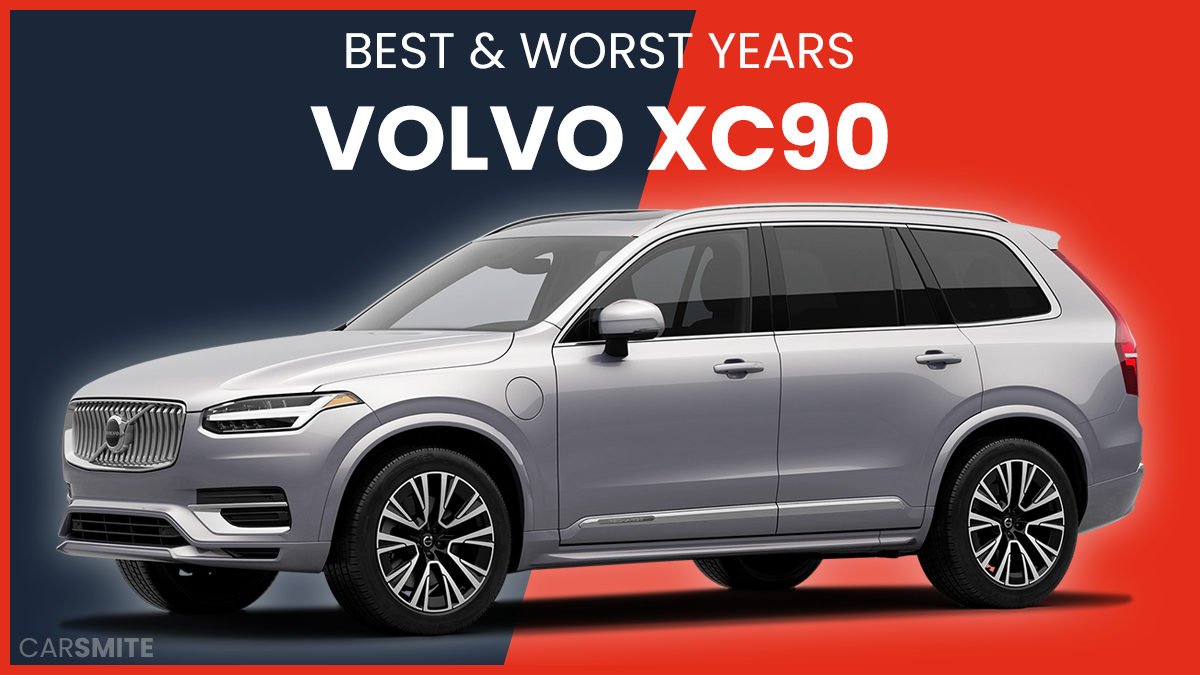Choosing the right Volvo XC90 year is essential for your premium SUV experience. With numerous model years available, it’s challenging to know which to pick or avoid.
Don’t fret it – I’ve got your back. This guide breaks down each XC90 generation, highlighting the outstanding ones and cautioning you about the duds.
Using data from NHTSA and J.D. Power, I’ve analyzed everything from performance to common issues. By the end, you’ll know which XC90 years are worth your money.
Ready to discover your ideal XC90?
Let’s dive in.
Table of ContentsShow
Volvo XC90 Generations
The Volvo XC90 burst onto the scene in 2002, swiftly becoming a titan in the luxurious SUV arena.
This Swedish stunner didn’t just show up – it showed off. The XC90’s first model year set the bar sky-high with groundbreaking safety tech, a roomy interior that could shame some apartments, and engines that packed a serious punch. In one fell swoop, Volvo proved it could play with the big boys in the global SUV market.
Let’s take a short trip through XC90 history:
| Generation | Years |
|---|---|
| 1st Generation | 2003-2014 |
| 2nd Generation | 2016-Present |
Each new XC90 generation brought its top-notch game, with significant upgrades in design, tech, and performance. Keep these shifts in mind as we zero in on the best (and worst) years to buy.
Volvo XC90 Best, Neutral, and Worst Years
When it comes to picking the cream of the XC90 crop (or avoiding the duds), we’ve left no stone unturned. Our comprehensive evaluations factor in:
- What real owners say about reliability
- How much you’ll shell out for annual maintenance
- Safety ratings that’ll make your insurance agent smile
- Consumer Reports’ reliability scores (because they don’t mess around)
- How happy owners are, according to Consumer Reports
- NHTSA recalls, investigations, and complaints (the stuff that keeps engineers up at night)
- Ratings from Edmunds, JD Power, Kelley Blue Book, VehicleHistory, and Cars.com (because more opinions = better decisions)
Want to see how the XC90 has fared over the years? Check out this graph:
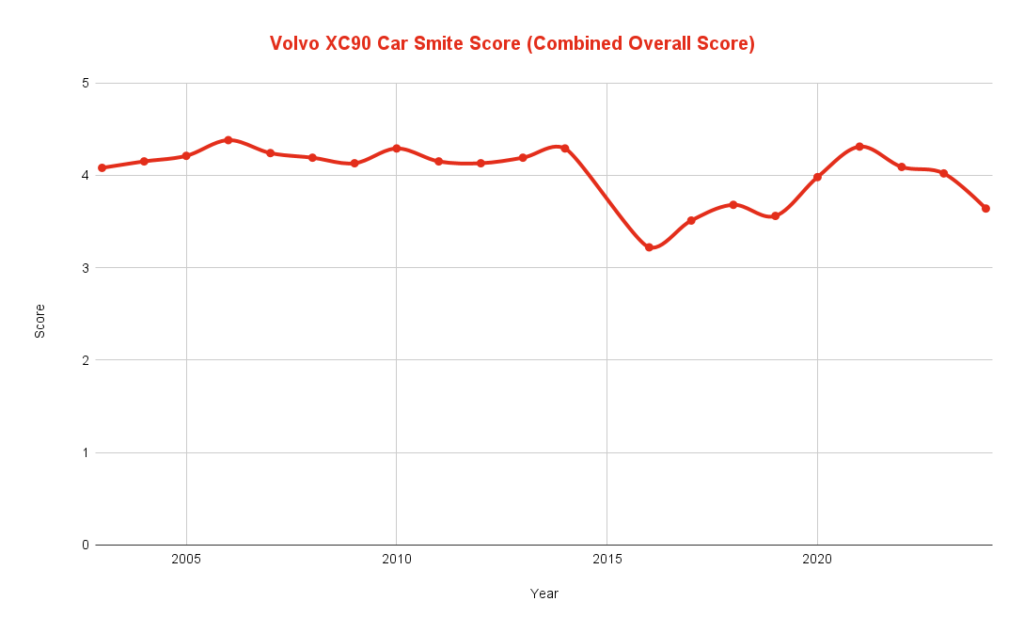
Please provide the text you’d like me to edit. I don’t see the actual text content that needs to have adjectives changed – only an incomplete sentence about examining something “year by year.”
| Generation | Best Years | Neutral Years | Worst Years |
|---|---|---|---|
| 1st Generation | 2009 2010 2011 2012 2013 2014 | 2006 2007 2008 | 2003 2004 2005 |
| 2nd Generation | 2018 2021 2022 2023 2024 | 2019 2020 | 2016 2017 |
What’s a “neutral” year, you ask? Think of it as the XC90’s middle ground – not a standout, but not a problem child either. These models won’t knock your socks off, but they won’t leave you stranded on the side of the road, either.
One more thing: those NHTSA recalls? They’re a substantial deal. The more recalls and complaints a model accumulates, the lower its reliability rating plummets.
Alright, let’s explore the intricate points of the XC90’s best and worst years.
Best & Worst Years for Volvo XC90 1st Generation (2003-2014)
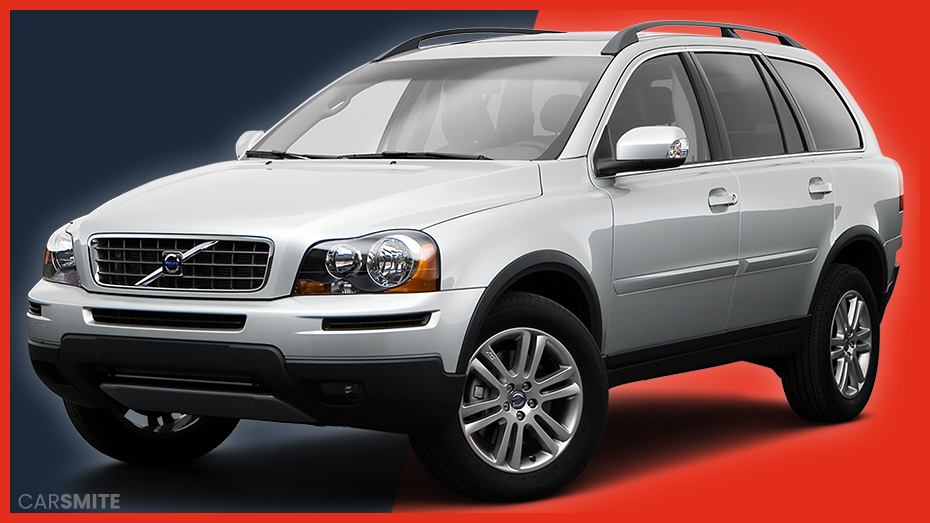
Volvo’s first-gen XC90 didn’t just dip its toes into the luxury SUV pool – it made a cannonball splash. This groundbreaking vehicle merged Volvo’s safety obsession with premium features and a buffet of engine options.
Want the best of the first gen? Look to 2009 and beyond. But steer clear of the 2006-2008 models – they’re the problematic children of the family.
The Best Years: 2009, 2010, 2011, 2012, 2013, 2014
What’s the cream of the initial XC90 crop? The 2009-2014 models take the cake.
These later years were like the XC90’s college graduation – all mature and ready to impress. Engine choices? You got ’em. The 3.2L SI6 I6 was reliable, but the 4.4L B8444S V8 was the star of the show. Smooth as butter and packed with power, it still managed a respectable 13 city/19 highway mpg.
Fancy trim levels? Check. The R-Design brought the sporty looks, while the Executive trim indulged you with luxurious touches.
Tech-wise, these XC90s were no slouches. Advanced infotainment? You got it. Safety features like BLIS and enhanced roll stability? All there. The 2014 model even snagged the IIHS Top Safety Pick award.
Best of all? These years ditched a lot of the problems that plagued earlier models. Reliability? It’s in the bag.
The Neutral Years: 2006, 2007, 2008
The 2006-2008 XC90s? They’re like the middle child of the family – not awful, just overshadowed by their more remarkable siblings.
Engine-wise, the 3.2L I6 (introduced in 2007) held its own. It wasn’t going to win any speed contests, but with 14 city/20 highway mpg, it wouldn’t drain your wallet at the pump either.
Safety and tech saw some reasonable upgrades during these years. Nothing groundbreaking, but enough to keep the XC90 competitive.
These models might not astonish you, but they won’t let you down either. Think of them as the reliable workhorse of the XC90 lineup.
The Worst Years: 2003, 2004, 2005
Every family has its black sheep, and for the XC90, it’s the 2003-2005 models. Steer clear of these problematic magnets.
The 2003 XC90 had a transmission with a mind of its own – slipping, jerking, and eventually giving up the ghost. Hope you like expensive repairs!
2004 and 2005 weren’t much improved. Electrical gremlins ran rampant, causing everything from dashboard failures to sudden engine stalls. The culprit? Water leaks. Because who doesn’t love a car that doubles as an aquarium?
2005 threw in an additional curveball with counterbalance shaft bearing failures. Translation? Your engine might decide to call it quits without prior notice.
Recalls? Oh, they had innumerable. Fuel pump leaks, tie rods with identity crises, and windshield wipers that took premature retirement.
Sure, these models were revolutionary for their time. But in the used car market? They’re about as appealing as a root canal.
Want the grisly details?
Check out the NHTSA recalls and complaints for the 2003, 2004, and 2005 XC90s. Just don’t say I didn’t warn you.
Best & Worst Years for Volvo XC90 2nd Generation (2016-Present)
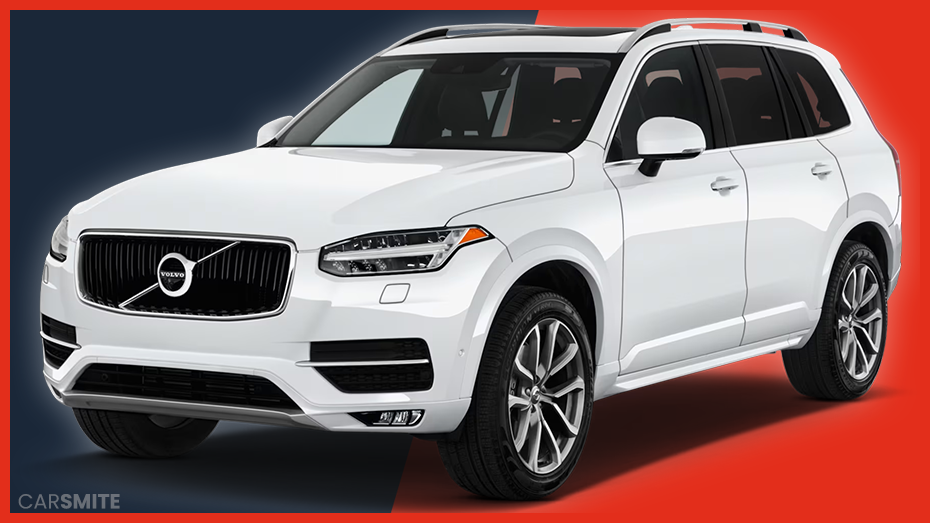
The second-gen XC90? It’s like Volvo took everything marvelous about the first gen, cranked it up to 11, and then sprinkled some Swedish magic on top. We’re talking substantial improvements in luxury, tech, and performance.
But even superstar families have their troublemakers. The 2016 and 2017 models? They’re the ones you don’t invite to family reunions. But from 2018 onward, especially 2021 and beyond? Now we’re talking XC90 excellence.
The Best Years: 2018, 2021, 2022, 2023, 2024
Looking for the XC90’s optimal years? You’ve found ’em. The 2018, 2021, 2022, 2023, and 2024 models are the peak of the second-gen harvest.
Under the hood, you’ve got options. The T5 and T6 Drive-E engines are reliable performers, but the T8 twin-charged Plug-in Hybrid? That’s sophisticated stuff. We’re talking up to 27 mpg combined and a 19-mile all-electric range. Your wallet (and the planet) will thank you.
Fancy some opulence? The Inscription trim’s got Nappa leather so smooth you’ll want to pet it. Prefer a more athletic vibe? The R-Design’s got you covered.
Safety-wise, these XC90s are fortresses on wheels. Pilot Assist, City Safety collision avoidance, 360° cameras – the works. No wonder the 2020-2023 models snagged IIHS Top Safety Pick+ awards.
Tech enthusiasts, rejoice. The 9-inch Sensus touchscreen is essentially a tablet on your dashboard, and with Apple CarPlay and Android Auto, your phone and car will be inseparable partners.
The Neutral Years: 2019, 2020
The 2019 and 2020 XC90s? They’re like the reliable Eddie of the family. Not flashy, but steady.
These models kept pace with their newer siblings in terms of performance, safety, and comfort. You’ve still got those superb engine options and sophisticated safety features like lane-keeping aid and oncoming lane mitigation.
Sure, there were a few recalls – low-pressure fuel pump issues and some automated emergency brake defects. But overall?
These XC90s are reliable citizens in the luxury SUV world.
The Worst Years: 2016, 2017
Want to know which XC90s to avoid like old leftovers? The 2016 and 2017 models. They’re the problematic children of the second gen.
The 2016 XC90 was especially troublesome. Electrical systems went haywire, dashboards played dead, coolant lines cracked faster than poor jokes, and some engines guzzled oil like it was going out of style.
2017 wasn’t much better, facing many of the same issues. Reliability? Let’s just say it wasn’t their robust suit.
Both years saw recalls for airbag issues and coolant leaks. Sure, they looked great on paper – all groundbreaking and opulent. But in the real world? They were more headache than luxury.
Want the complete terrifying story?
Check out the NHTSA recalls and complaints for the 2016 and 2017 XC90s. Just don’t blame me for any terrible nightmares.
Volvo XC90 Resale Values
Curious about how well the XC90 holds its value? This graph tells the story:
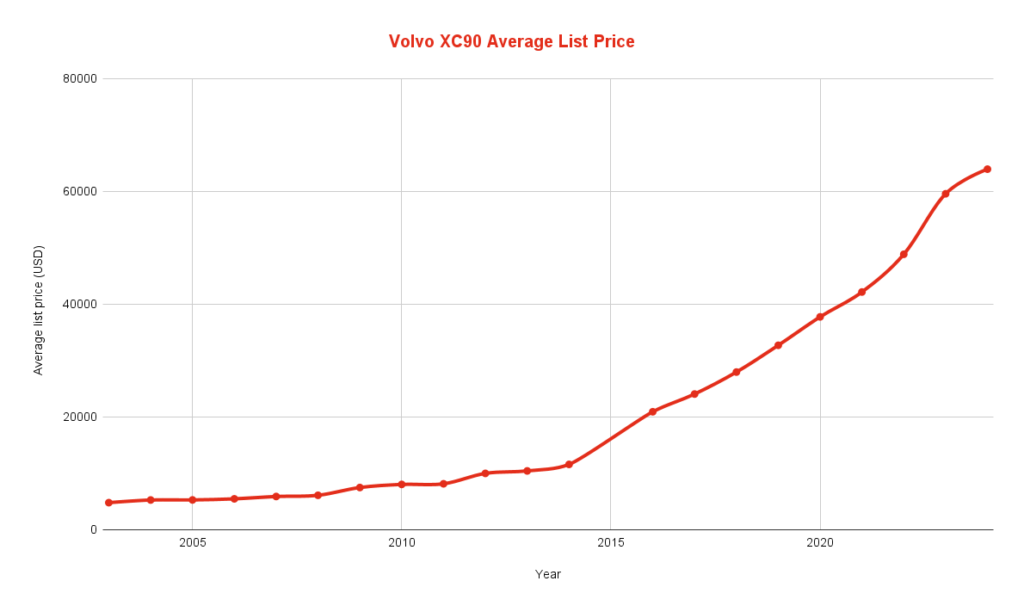
Conclusion
There you have it, folks – the complete guide to picking the perfect Volvo XC90.
Want the best of the finest? Look to the 2009-2014 models for first-gen excellence, or the 2018 and 2021-2024 range for second-gen superiority. These are the years when Volvo really hit its stride.
But buyer beware: steer clear of the 2003-2005 models if you cherish your mental health (and your finances). And those 2016-2017 XC90s? They’re more troublesome than they’re valuable.
Now it’s your turn. What’s the make-or-break feature for you when shopping for an XC90? Safety tech? Opulent interiors? That elegant Scandinavian styling?
Drop your thoughts in the comments below.
Let’s keep the XC90 discussion animated!
